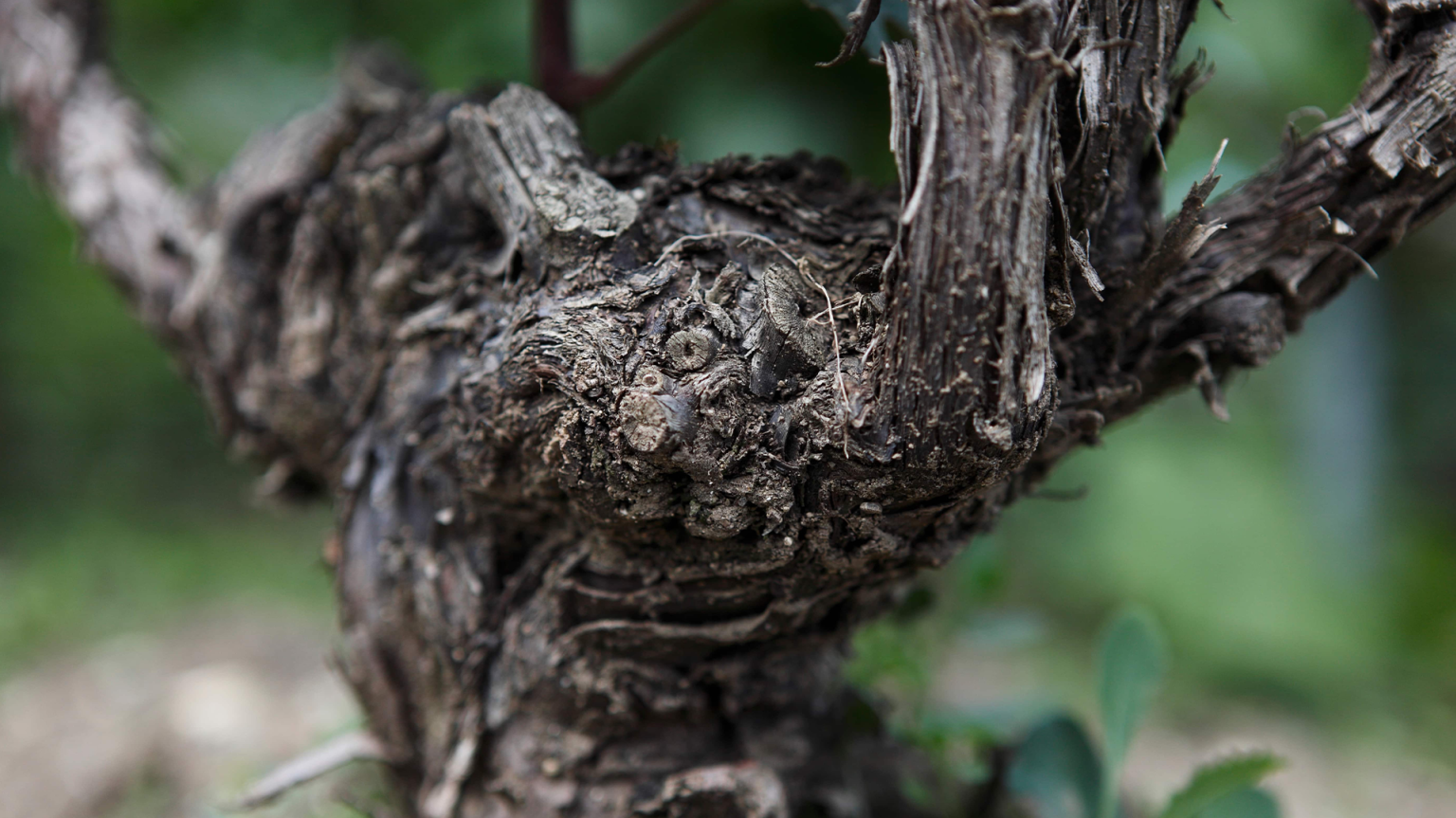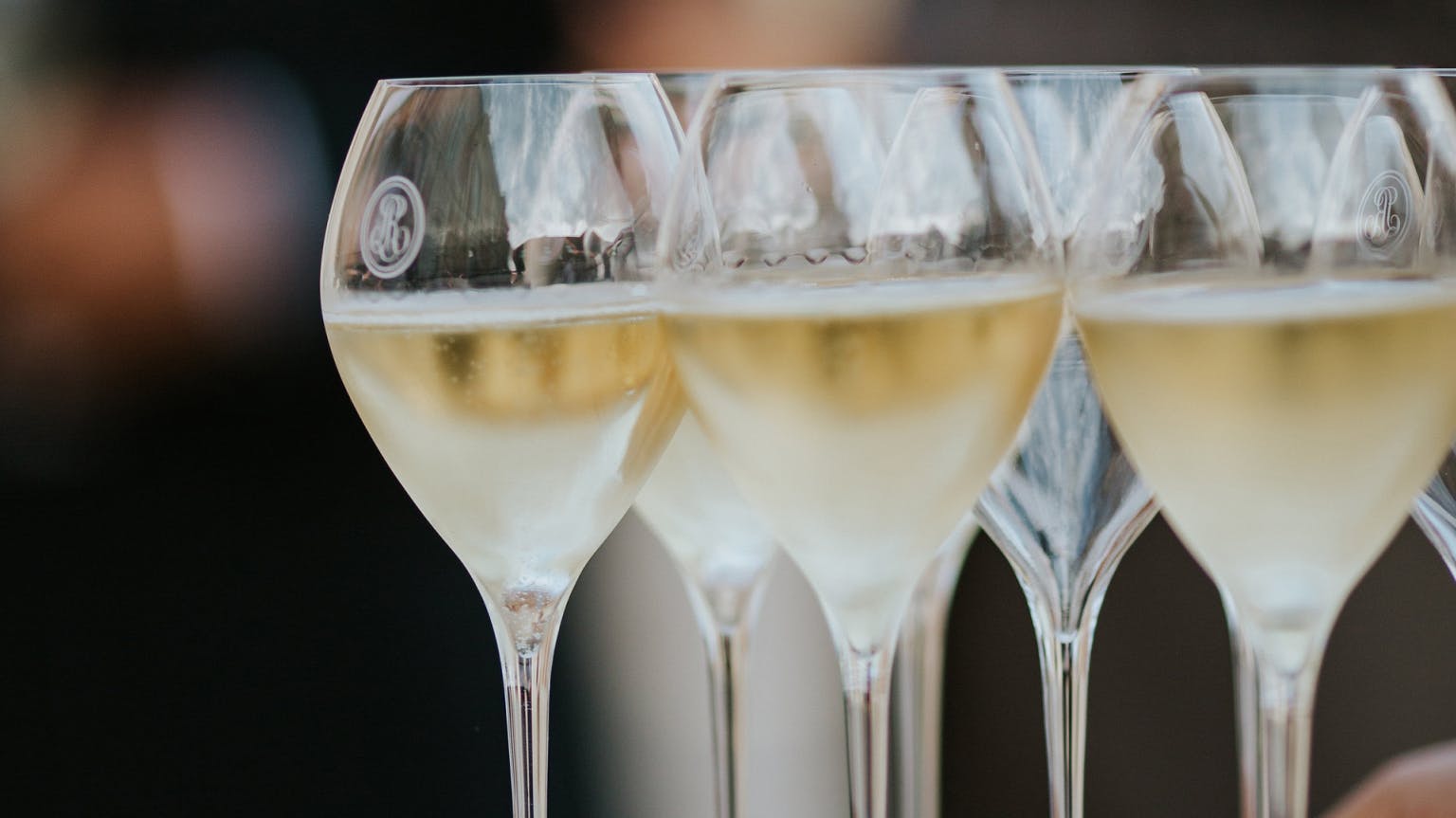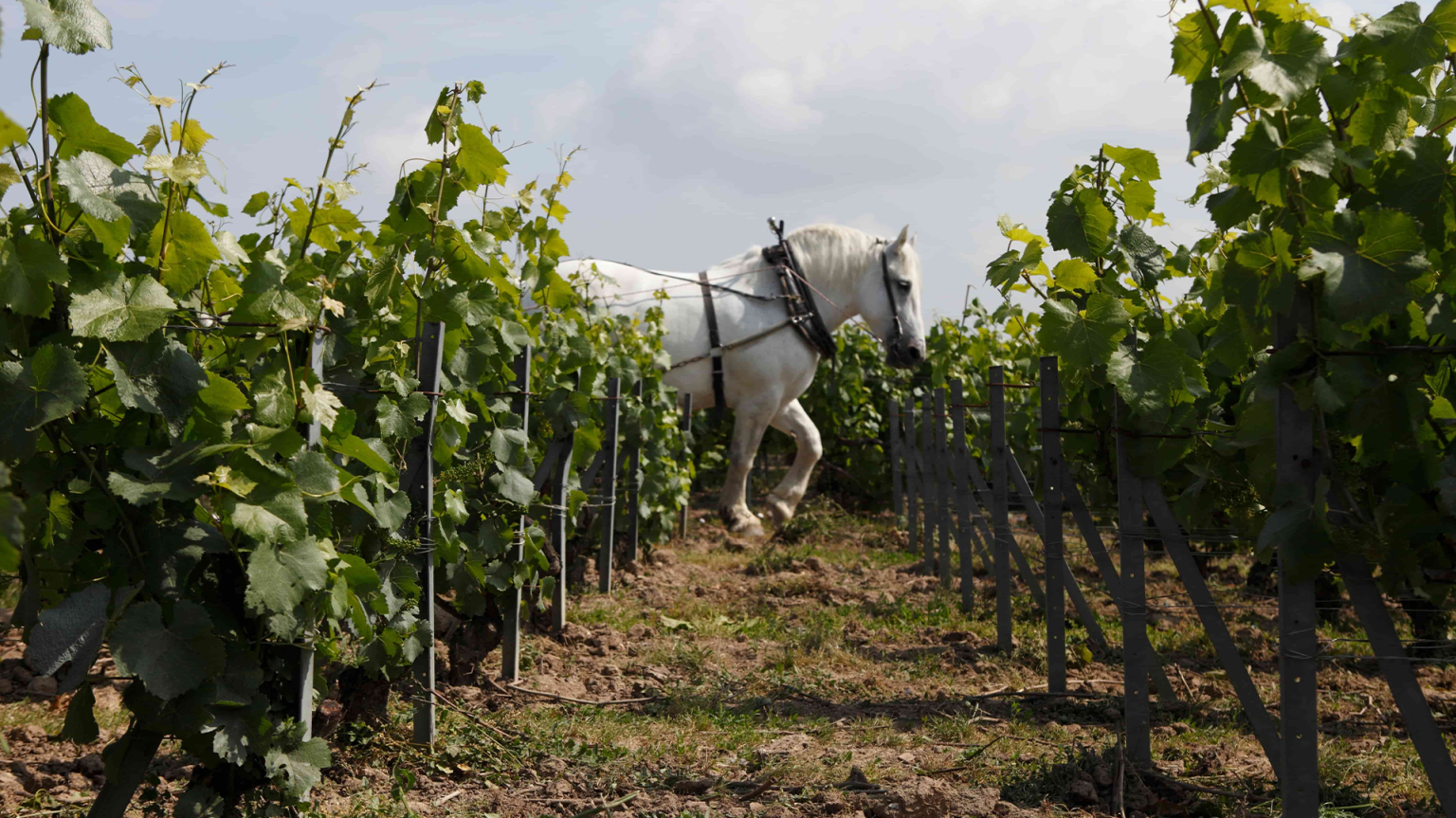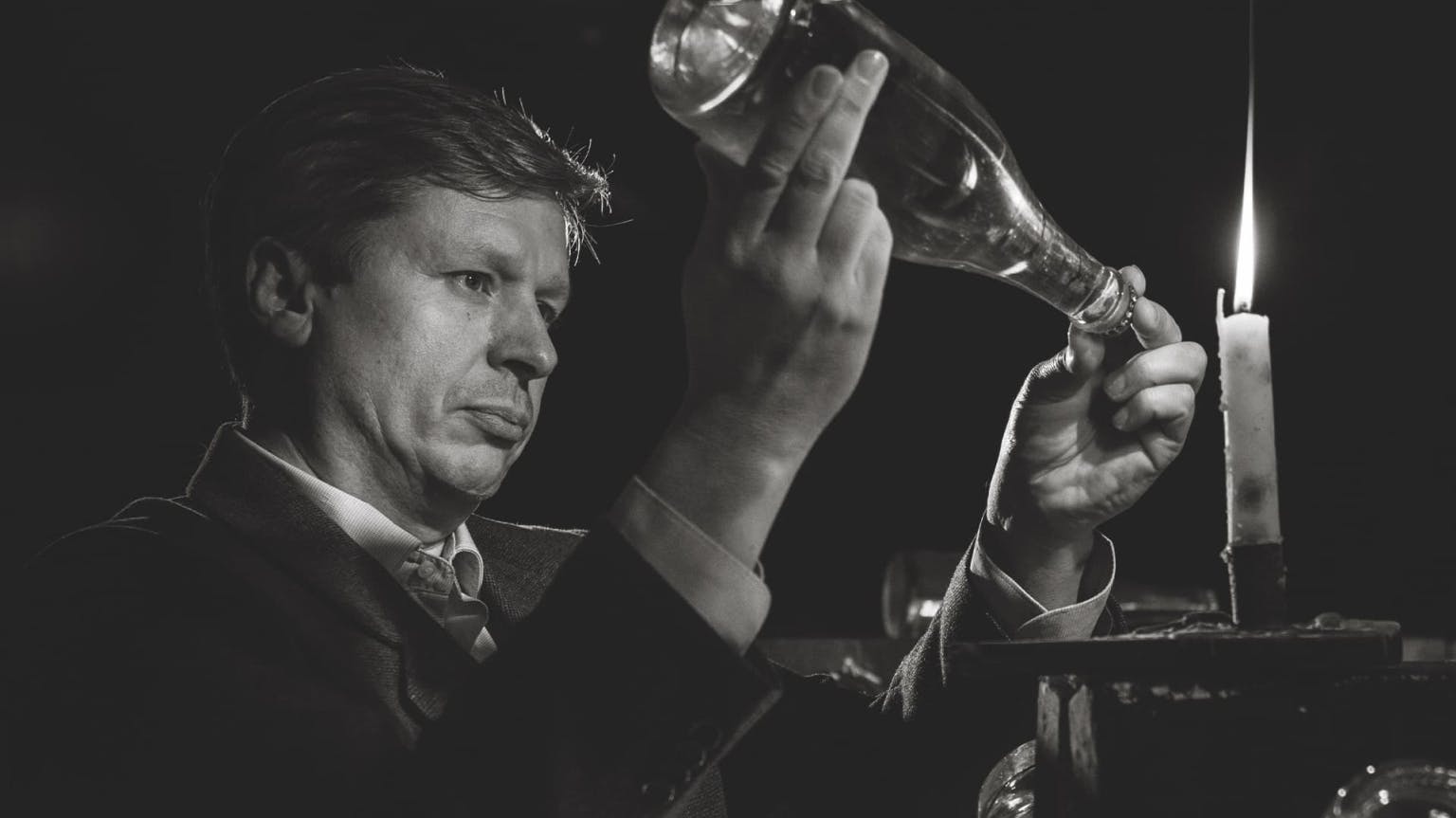Jean-Baptiste Lécaillon is a legend of the industry. When he took the helm at Louis Roederer in 1999, he became Champagne’s youngest Chef de Cave, aged just 33. In a rare move for the time, he fought to ensure he was in charge of both the vineyards and winery – knowing that the former would define the wines he produced. Since then he’s continued to push boundaries in the name of quality.
The house is one of the last to remain family-owned and – even more rarely for a Grande Marque – it owns an impressive 242 hectares of vines, providing enough fruit for around 70% of its production. Lécaillon transformed the way Roederer farmed, pushing first for an organic, then biodynamic approach – with half the vineyards now certified organic and half worked biodynamically, and no herbicides used at all. The results speak for themselves – with the house’s prestige cuvée Cristal arguably the finest and most sought-after in the region.
And the man himself is as effervescent as the wines he crafts. Lécaillon is clearly still enchanted by the world of wine –absorbed by its complexities and totally excited by it. Talking to him at a recent tasting, he explains his aim simply: “We are going beyond the bubbles.”
For him, Champagne has traded on its fizz for too long. The wines were once sweet and served with dessert, they then became dry and were used as an aperitif, before becoming inextricably tied to celebrations – a curse that has limited the way Champagne is seen, and savoured. The industry has capitalised on its occasionality, but behind those bubbles – Lécaillon insists – is “a real terroir, a real wine”.

It is this exact sentiment that is behind the Grower movement – something that Lécaillon clearly identifies with – however the movement also poses a threat to those trying to source fruit. For the little fruit Roederer doesn’t grow themselves (30% of their production), Lécaillon picks specific plots from around the region and tries to encourage growers to use a sustainable approach. The team will visit the vineyards in spring and summer, and choose the picking date with the grower. While today it’s sometimes tricky to persuade growers to change the way they farm, Lécaillon anticipates a generational shift will take place as more sustainability-invested children take over from their parents. Roederer used to buy fruit from Anselme Selosse, but – naturally –the star vigneron now keeps it all for himself. The fear is that the new generation won’t want to sell their fruit – leaving the Grandes Marques only lesser sites, farmed without the same stringency.
Everything Lécaillon has done at Roederer has been about championing site. He arrived at the house in 1989, but set off instantly for the property’s projects in Anderson Valley, California and then Jansz in Tasmania, returning to Champagne in 1994. Between 1996 and 1998, he worked on a soil study of the house’s vineyards, as well as an archive study – tasting wines back to 1876. When he took over in 1999, he separated all the plots – with 45 specific mid-slope chalky sites dedicated exclusively to Cristal, fruit for the Blanc de Blancs coming from their La Côte estate in Avize and the vintage wine based around Pinot Noir from their La Montagne estate in Verzy.
Changing the viticulture was the next step. In the 1970s, ’80s and even ’90s, Champagne’s soils were a literal dumping ground – with Paris’s rubbish used as “fertiliser”. Lécaillon is one of many that has pushed for change in this area. He feels that organic farming produces better fruit with more dry extract and concentration, but also healthier vines that are stronger and more resistant to the vagaries of vintage – and climate change. Half the property’s vines are now farmed biodynamically – including all the plots used for Cristal.

In a bid to further champion their terroir, Lécaillon established the region’s first private nursery in 2015. He wanted to gather different massale selections from the Roederer vineyards – cuttings from pre-clonal vines that he feels have adapted to climate change and will be key to the house’s (and Cristal’s) future. He claims that it’s the biggest private collection of Pinot Noir in France, and they’ve now expanded the nursery to include not just Chardonnay and Meunier, but all seven of the region’s permitted varieties – including the little-planted Arbane, Petit Meslier, Pinot Gris and Pinot Blanc. The Chef de Cave feels that field blends with these varieties could be the future with climate change – adding freshness to the wine. Over the last two decades, Lécaillon’s work in the vineyard has brought further freshness and precision to the wines – and the introduction of Collection was the latest step in that direction, a move to “bring [the wine] closer to the terroir”.
Cristal might be the jewel in the house’s crown, but a non-vintage blend is any house’s calling card – representing the most significant volume produced (75% at Roederer) and the wine that reaches the most people. It is, Lécaillon says, always the hardest to produce, the most complex to blend – and yet also the one that receives the least attention.
Roederer’s Brut Premier was introduced in 1986, but back then Champagne was more marginal, viticulture and winemaking less advanced, and the battle was for ripeness. In vintage years, the fruit was actually ripe; the art of non-vintage blends was correcting the under-ripeness of the other years with reserve wines. Now, with climate change and the evolution of farming, Champagne has riper fruit than ever before, and an increasing number of vintage-quality years. “The battle now is not for ripeness, but for freshness,” Lécaillon explains.
Collection 242 was released in September 2021, with many initially mourning the loss of Brut Premier; people, however, have been won round. As has become fashionable (along with the likes of Krug or even Nyetimber), the wine is “multi-vintage” or “MV” rather than “NV” or “non-vintage”. In Lécaillon’s view, “NV” is “corrective”, whereas, “MV is the story of the new Champagne”. Their aim is no longer consistency, but to make the best possible wine in that year.
He points to 2002 as a pivotal year in the journey to Collection. It was a stunning growing season, with every plot producing wine of vintage quality – but to build a consistent non-vintage wine, they had to “destroy” the quality of each. While Lécaillon feels Brut Premier was an “outlier” in the range, Collection is “more Roederer”, “more Champagne” – which, for him, has to have an oyster-shell salinity.

A key part of developing Collection was creating a perpetual reserve. Held in an enormous 10,000hl stainless steel tank, this reserve is a constantly evolving blend of Pinot Noir and Chardonnay. Started in 2012, it contains wine from every harvest since, stored without oxygen, in the depths of their cellar where the temperature is cool and stable. This, Lécaillon feels, brings extra texture, depth and a “vintage dimension” to Collection – without the heaviness that he saw in Brut Premier.
The blend also includes more traditional reserves aged in oak (around 10% of the final blend), all with fruit from the younger vines in plots otherwise dedicated to Cristal (only 20-year-old vines make it into the prestige cuvée). The most important element here is that the toasting of the barrels is very light, what Lécaillon describes as a “white toast”, so that it doesn’t dominate the terroir.
Collection 242 was followed by 243 last year – and they are two extremely different wines, the 243 riper and richer versus 242’s more mineral expression. This – for Lécaillon – is what makes an “MV” approach so much more interesting, for both him and wine-drinkers. It is, he tells me, “a blank page every year”.
With everything from zero-dosage experiments to rootstock trials, Lécaillon is constantly looking for ways to improve – with a relentless zest and enthusiasm. For this vigneron, a blank page isn’t daunting – it’s a chance to express his terroir.
Explore all listings from Champagne Louis Roederer or read more Editorial

